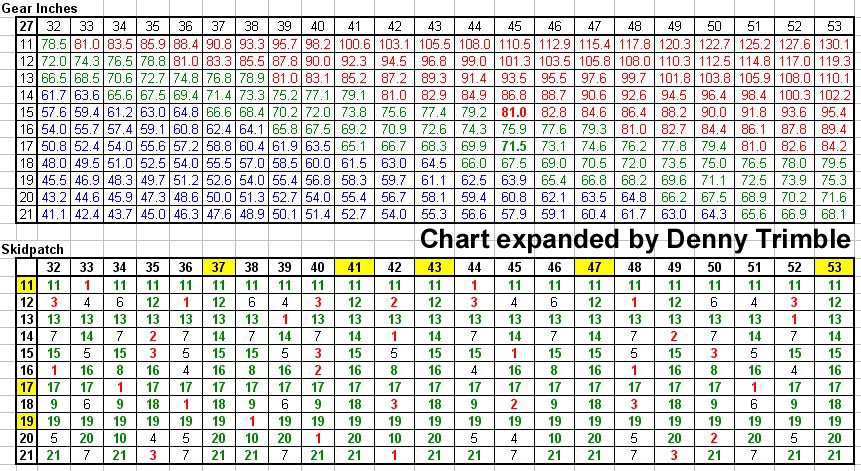When it comes to fixed-gear cycling, the connection between rider and machine is intensely profound. The pedals become an extension of your legs, and with every revolution, you embody a spirited dance with the asphalt beneath you. However, achieving that seamless synergy begins with one pivotal decision: choosing the optimal gear ratio. This may seem mundane at first glance, but shift your perspective, and it becomes a quest for unlocking your riding potential. Buckle up, because we’re about to dive into the intricacies of gear ratios, the subtle art of cycling, and how to maximize your fixed gear experience.
Understanding gear ratios is akin to deciphering a language unique to cycling. The gear ratio, simply put, is the relationship between the number of teeth on the front chainring and the number of teeth on the rear cog. Mathematically, it’s expressed as a fraction: the number of teeth on the chainring divided by the number of teeth on the cog. For instance, a 48-tooth chainring paired with a 16-tooth cog results in a gear ratio of 3:1. But don’t let my mention of numbers lull you into complacency! This numerical relationship has profound implications for your riding experience.
The Dance of Speed and Endurance
Curiously, a higher gear ratio emphasizes speed. With a 3:1 ratio, for every turn of the pedals, the bike travels three times the distance. While it’s exhilarating to zip through the city streets, there’s a catch. The higher the gear ratio, the greater the challenge when it comes to climbing steep hills or navigating headwinds. A lower gear ratio, perhaps 2:1, delivers more torque, making it easier to get up those daunting inclines but at the cost of speed on flat stretches. Finding your sweet spot between these two extremes is essential; your choice should reflect your riding environment and personal objectives.
Terrain and Riding Style
Consider where and how you intend to ride. If you’re mostly traversing flat urban landscapes, a higher gear ratio might serve you well, allowing you to cruise effortlessly. Conversely, if your adventures regularly take you to hilly terrains or rugged paths, a lower gear ratio will enhance your climbing prowess and comfort. Riding style plays a critical role, too. Enthusiastic sprinters may gravitate toward higher ratios for that burst of speed, whereas leisure riders or those tackling endurance challenges might prefer more manageable ratios that permit a comfortable cadence.
The Art of Skid Patches
An intriguing aspect of fixed-gear riding is the concept of skid patches. For those who relish showing off their skills, skidding becomes an art form. The gear ratio you choose can significantly affect how efficiently you can produce and control skids. Generally, a lower gear ratio allows for more skid patches, which are essentially the different points on the tire that make contact with the ground during a skid. Optimizing your gear ratio to suit your weight and preferred skid technique can enhance your ability to execute those dazzling moves, creating a spectacle that’s as much about style as it is about technique.
Experimentation: The Key to Mastery
Curiosity is your ally in this exploration of gear ratios. Don’t shy away from experimentation. Change your setup! Tinker with different configurations and document the changes you feel in your rides. Perhaps you’ll find that a 47-tooth chainring with a 15-tooth cog feels like the perfect harmony for your particular riding style and terrain. Or maybe you’ll discover a surprising affinity for a setup that’s slightly beyond your comfort zone. Each ride becomes a classroom, and the lessons you learn will be unquantifiable and priceless as you continue to evolve as a fixed-gear rider.
Cadence: Finding Your Rhythm
While gear ratio plays a central role, let’s discuss cadence, the rhythm of your pedaling. It’s the beat that drives the music of your ride. A healthy cadence—generally between 70 to 90 revolutions per minute for most cyclists—can lead to improved efficiency and endurance. The relationship between gear ratio and cadence is symbiotic; a higher gear ratio might cause your legs to labor harder at a lower cadence, while lower ratios allow for a fluid, fast-paced rhythm. Your goal should be to find a gear ratio that complements your natural cadence, creating a harmonious interplay between effort and enjoyment.
The Future of Your Fixed-Gear Journey
As you embark on this journey of discovering the ideal gear ratio, remember that cycling is as much about the mistakes and victories on the road as it is about the technical side. Every adjustment in your gear ratio invites a new narrative to your cycling story. Ultimately, the best gearing setup is the one that not only meets your immediate needs but also promises to evolve with you—supporting your growth as a rider and your varied cycling pursuits.
So, as you contemplate your next ride, ponder this: What’s the gear ratio that will transform your experience? Embrace the promise of exploration, feel the thrill of discovery, and allow the dynamics of gear ratios to ignite a relentless passion for the ride ahead. You hold the key to unlocking your own cycling adventure, and the perfect gear ratio is just the beginning.
